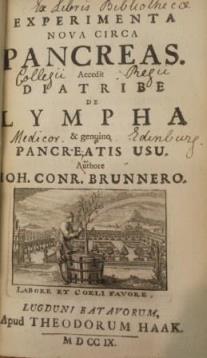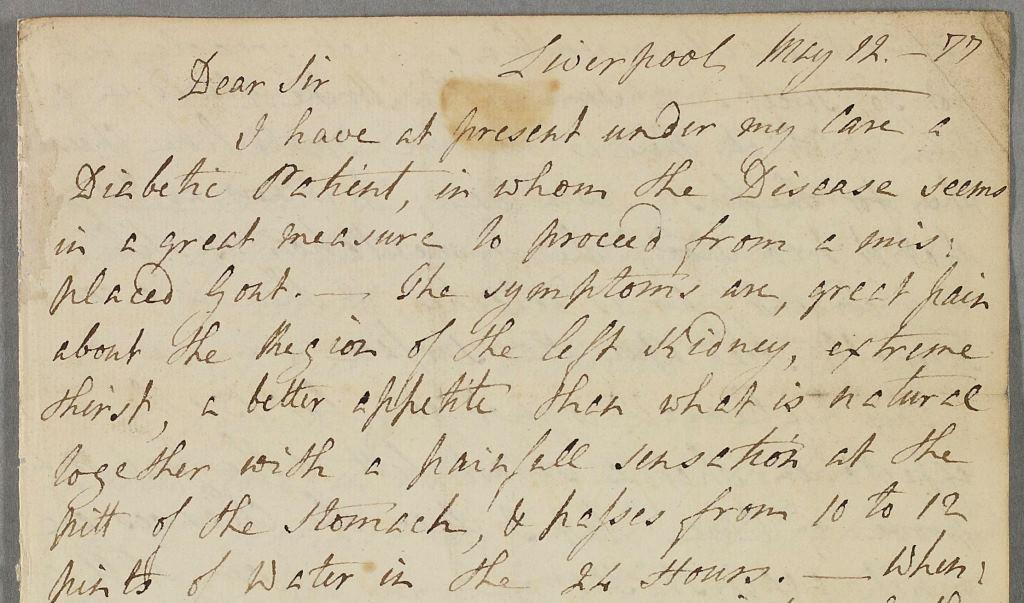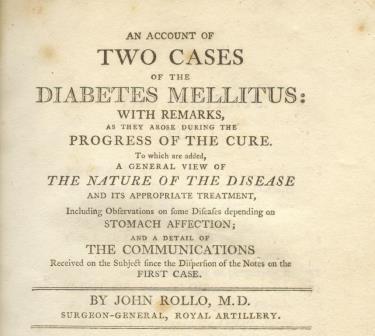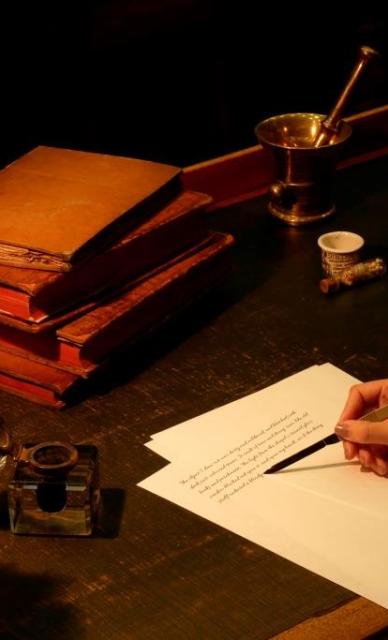Physicians' Gallery Newsletter
Updates on upcoming events, exhibitions and online stories
Empowering medical excellence, shaping healthcare futures.

Johan Brunner, a Swiss anatomist, experimented on dogs to explore the function of the pancreas. In his first experiment in 1673, Brunner removed a dog’s pancreas and reported that it lived for three months afterwards.
Brunner performed his most famous experiment in 1683. After removing a dog’s pancreas he noted: “on the fourth day [the dog] was thirsty & drank exceedingly from a brook flowing past the town”. The dog died on the eighth day after the experiment.
Despite the symptoms he produced in the dogs he experimented on, Brunner did not make the association with diabetes.

Mathew Dobson, an Edinburgh graduate practicing in Liverpool, is now most famous for proving conclusively that the urine of diabetic patients contained sugar. Dobson noticed the urine of one of his patients didn’t coagulate and left the “white cake” after evaporating.
Dobson considered diabetes to be a disease of imperfect digestion which explained its emaciating effects.
Matthew Dobson was a student of Cullen while at Glasgow in the early 1750s. William Cullen was a famous Scottish physician who later had a very successful private practice in Edinburgh based in large part on postal consultations. Dobson assisted Cullen with his experiments on evaporation and it was Cullen who inspired Dobson’s interest in chemistry.
Dobson sent this letter to Cullen in 1777 asking for help with a case of a diabetic patient. He describes:
“extreme thirst, a better appetite than what is natural…passes from 10 to 12 pints of water in the 24 hours. … The urine is sweet, & two quarts yielded four ounces of an extract exactly resembling thick treacle, but not so sweet.”

The letter can be read here. RCPE Library holds an extensive collection of Cullen’s correspondence, which you can view online via the Cullen Project.
Frederick Pavy, anatomist and physiologist, is known as the founder of the modern theory of diabetes. He studied carbohydrate metabolism and the control of diabetes through diet. He treated his diabetic patients with a carbohydrate-free diet and substituted bread with almonds and other protein rich foods. Pavy also recognized the importance of acetone in acute stages of diabetes. His book on dietetics A treatise on food and dietetics physiologically and therapeutically considered was published in 1873.

John Rollo, an Edinburgh trained military surgeon, is remembered for this work in which he described the results of his treatment of Capt. David Meredith, one of his patients with diabetes. Rollo placed Meredith on a strict meat diet. According to Rollo’s notes, his patient’s condition improved rapidly. In the later editions of this work Rollo added more cases of diabetes and notes of the use of his treatment by other physicians.
Willis studied classics then medicine at Oxford, where he later became professor of natural philosophy. He is now most famous for his pioneering role in the study of the brain.
In this 1684 work Willis commented on the sweetness of urine in diabetic patients: ”it seems more hard to demonstrate, why the Piss of such as are sick of this Distemper, is so wonderfully sweet, or should taste like Honey”. He referred to the condition as “diabetes mellitus”, but failed to understand that it actually contained sugar: “But why it should be so wonderfully sweet, like Sugar or Honey, is a knot not easie to untie”

Updates on upcoming events, exhibitions and online stories